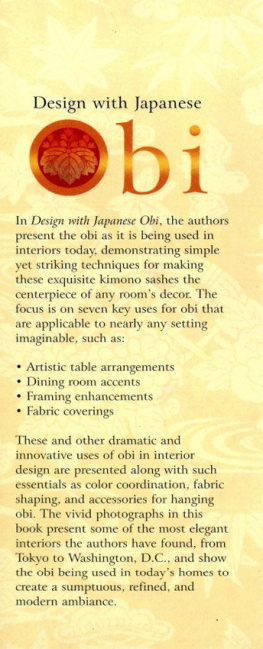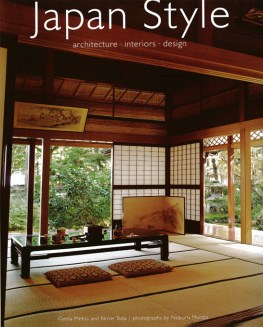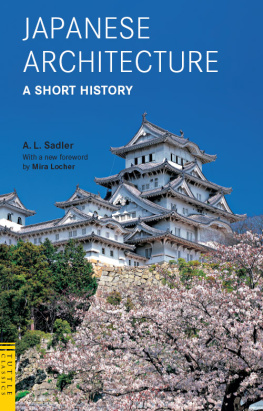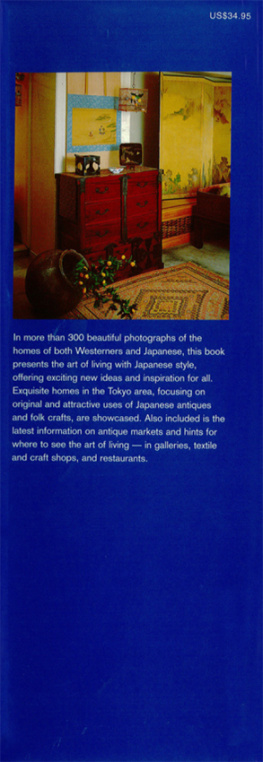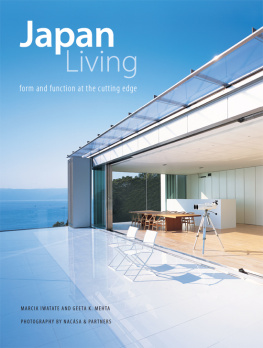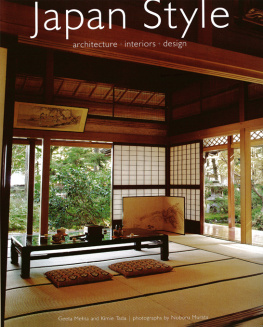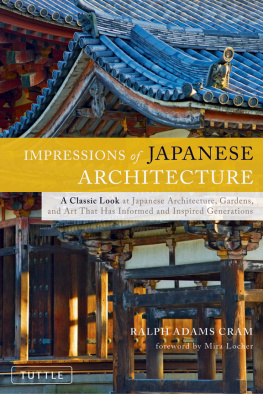Japanese
Homes
and Their
Surroundings
Edward Sylvester Morse (1838-1925), American zoologist, academic, author, museum curator, and imaginative inventor was born in Portland, Maine, the son of a Christian preacher. After an early start as a mechanical draftsman, where he developed a talent for making detailed drawings, he embarked on an academic career in zoology, attracting the attention of Charles Darwin for his discovery that brachiopods are worms rather than mollusks. A visit to Japan in 1877 in search of coastal brachiopods led to an appointment at the newly opened Tokyo Imperial University, where he taught zoology and biology. He opened the study of archaeology and anthropology in Japan with his discovery of the Omori Shell Mounds near Tokyo, and his research on material culture. While in Japan, he authored Japanese Homes and Their Surroundings , illustrated with his own line drawings, and assembled a collection of over 5,000 pieces of Japanese pottery. He also helped develop the Japanese Imperial Museum. On his return to the US in 1880, he took up his life's work as director of the prestigious Peabody Museum in Salem, Massachusetts, and as Keeper of Pottery at the Museum of Fine Arts in Boston. Towards the end of his long career, he was awarded the Second Degree Order of the Sacred Treasure and the Order of the Rising Sun by the Japanese government.
David and Michiko Young, who have written a Foreword to this book, have conducted research on Japanese aesthetics for many years. David Young was born in the United States and spent his childhood in Sierra Leone, West Africa. After obtaining his Ph.D. from Stanford University, he taught anthropology at the University of Alber-ta in Canada before moving to Japan to continue teaching. Michiko (Kimura) Young was born in China and raised in Japan. After graduating from Kyoto Gaidai University, she moved to the United States and then to Canada, where she worked for many years in the international affairs office at the University of Alberta. The Youngs are now retired in the Rocky Mountains of British Columbia. Together they have authored An Introduction to Japanese Architecture (Periplus Editions, 2004), The Art of the Japanese Garden (Tuttle Publishing, 2005), and The Art ofJapanese Architecture (Tuttle Publishing, 2007).
Published by Tuttle Publishing, an imprint of Periplus Editions (HK) Ltd., with editorial offices at 364 Innovation Drive, North Clarendon, Vermont 05759 U.S.A. and 130 Joo Seng Road #06-01, Singapore 368357.
Copyright in Japan, 1972, by Charles E. Tuttle Co. Inc
Front cover photograph by Noboru Murata
All rights reserved. No part of this publication may be reproduced or
utilized in any form or by any means, electronic or mechanical, including
photocopying, recording, or by any information storage and retrieval
system, without prior written permission from the publisher.
LCC No: 76157262
ISBN-10: 4-8053-0889-3
ISBN-13: 978-4-8053-0889-9
Distributed by
North America, Latin America & Europe
Tuttle Publishing
364 Innovation Drive
North Clarendon, VT 05759-9436 U.S.A.
Tel: 1 (802) 773-8930 Fax: 1 (802) 773-6993
info@tuttlepublishing.com
www.tuttlepublishing.com
Japan
Tuttle Publishing
Yaekari Building, 3rd Floor
5-4-12 Osaki, Shinagawa-ku
Tokyo 141-0032
Tel: (81) 03 5437-0171 Fax: (81) 03 5437-0755
tuttle-sales@gol.com
Asia Pacific
Berkeley Books Pte. Ltd.
61 Tai Seng Avenue, #02-12, Singapore 534167
Tel: (65) 6280-1330 Fax: (65) 6280-6290
Email: inquiries@periplus.com.sg
www.periplus.com
11 10 09 08 07 5 4 3 2 1
Printed in Singapore
TUTTLE PUBLISHING is a registered trademark of Tuttle Publishing,
a division of Periplus Editions (HK) Ltd.
TO
WILLIAM STURGIS BIGELOW, M.D.
IN MEEORY OF THE DELIGHTFUL EXPERIANCES IN THE
"Heart of Japan"
THIS VOLUME IS AFFECTIONASTELY INSCRIBED
BY THE
AUTHOR
FOREWORD
Edward Sylvester Morse was born in 1838 in Portland, Maine, the son of a Congregationalist minister. Though intelligent and curious, he was easily distracted and succeeded in being expelled from every school he attended as a boy. As a young man, he worked as a mechanical draftsman for Portland Locomotive Company, where he developed the skills to create detailed drawings. At the age of eighteen, Morse enrolled in a small school in Maine and then went on to study conchology at Harvard. After teaching anatomy at Bowdoin College in Maine, he traveled to Japan in 1877 to conduct research on brachiopods. His discovery that brachiopods are worms rather than mollusks attracted the attention of Charles Darwin, whose theories Morse promoted in Japan. In the process of his research on brachiopods, he discovered the Omori Shell Mounds near Tokyo, a late Jomon site, whose artifacts are preserved at the University of Tokyo.
Three years after his arrival, Morse was offered a faculty position at the newly established Tokyo Imperial University, where he taught zoology and biology. In addition to his teaching and research duties, he continued his excavations at the Omori Shell Mounds (the first scientific archaeological excavation to be conducted in Japan), collected Japanese pottery, and studied various aspects of material culture, including traditional Japanese homes and lifestyles. His varied activities and contributions earned Morse a solid reputation in the fields of zoology, archaeology, and anthropology.
Morse also helped develop the Japanese Imperial Museum. In 1880, Morse returned to the United States, where he became a director of the Peabody Museum in Salem, Massachusetts, until 1914. In 1890, he also became Keeper of Pottery at the Museum of Fine Arts in Boston, which now contains Morse's collection of approximately 5,000 pieces of Japanese pottery. Toward the end of his career, Morse was awarded the Second Degree Order of the Sacred Treasure and the Order of the Rising Sun by the Japanese government. Edward Morse died in Salem in 1925.
Morse arrived in Japan only nine years after the Meiji Restoration of 1868, which eliminated the centralized feudalism of the preceding Tokugawa Period (1600-1868), abolished the samurai class, and set Japan on a rapid course of modernization designed to help Japan catch up with the West and to prevent its colonization. In addition to sending its brightest young people to Europe and the United States to study banking, railroads, industry, and anything else that might prove useful, the Japanese government encouraged intellectuals to come to Japan to instruct the Japanese in Western ways. Edward Morse helped advise the government on which foreigners to hire.
Notable examples of Americans who joined Morse in Japan in the early Meiji Period are Ernest Fenollosa and William Bigelow. Fenollosa, who arrived in Japan in 1878 to teach at Tokyo University, was instrumental in preserving traditional Japanese art, writing books on the topic and rescuing numerous discarded items, now housed at the Boston Museum of Fine Arts. William Bigelow arrived in Japan in 1882 to study Japanese art and Buddhism. Bigelow gave financial assistance to Okakura Kakuzo in setting up the Japan Academy of Fine Arts and also contributed more than 40,000 paintings and other objects to the Boston Museum of Fine Arts.
The early Meiji Period was a time when Japan was forsaking its own traditions and enthusiastically endorsing anything Western. Morse sensed that many aspects of traditional material culture were about to be lost. As a result, he began investigating traditional Japanese homes, spending several years visiting Japanese houses and making detailed drawings of both exteriors and interiors. He also kept a journal of his observations and conversations. This research culminated in the publication of Japanese Homes and Their Surroundings in 1886 by Tickner & Company. Morse said in the Preface to his own work: "I feel now that the labor has not been altogether in vain, as it may result in preserving many details of the Japanese house, some of them trivial, perhaps, which in a few decades of years may be difficult, if not impossible, to obtain."



